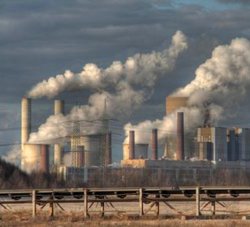 Global climate models abound. What is harder to pin down, however, is how a warmer global temperature might affect any specific region on Earth.
Global climate models abound. What is harder to pin down, however, is how a warmer global temperature might affect any specific region on Earth.
Dr. Marco Tedesco, Associate Professor of Earth and Atmospheric Sciences at The City College of New York (CCNY), and a colleague have made the global local. Using a regional climate model and the output of three global climate models, they can predict how different greenhouse gas scenarios would change the face of Greenland over the next century and how this would impact sea level rise.
The resulting fine-scale model gives a high-resolution picture of the island’s future. “We put Greenland under a microscope to see what accounts for melting and for ice mass changes in different regions,” said Professor Tedesco.
He and his colleague, Xavier Fettweis of the University of Liege, Belgium, reported their results online on November 8 in Environmental Research Letters.
They compared two possible future CO2 scenarios: a concentration of carbon dioxide in the atmosphere projected for the end of the century of 850 parts per million (ppm) versus a more aggressive projection of 1370 ppm. The first approximates the current rate of increase.
The Greenland ice sheet would lose more ice and snow to melting than it would accumulate in both scenarios. Basins on the southwest and north coasts would suffer the greatest losses. Temperatures would only have to increase by 0.6 to 2.16 degrees Celsius (1.8-3.9 degrees F) to tip the balance into more loss than gain.
The new model shows how a melting would alter the topography of “one of the world’s refrigerators”, potentially affecting adjacent ocean circulation and salinity, and speeding further melting.
Though dramatic, Professor Tedesco said the predictions he reported might be too conservative. “They don’t take into account progressive effects of the changing elevations and topography and the acceleration of ice sheet movement.” These results, however, represent a step forward toward understanding the potential repercussions of warming temperatures; an improvement on models that give a much coarser view into the future, he added.
“Some areas will be 400 meters below the current elevation just because of melting. This might very well impact the speed and amount of ice that is flowing to the ocean. It would increase the rate of melting, because conditions get warmer at lower elevations” he noted. “Imagine an ice cream that is melting much faster in one area. This will change the shape of the ice mass over Greenland.”
This work was supported by the National Science Foundation (NSF).
Details of the Study:
Source: CCNY.


















